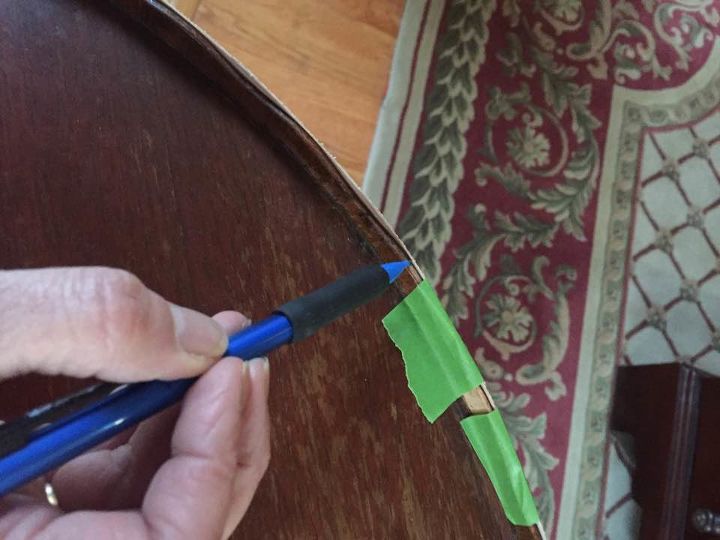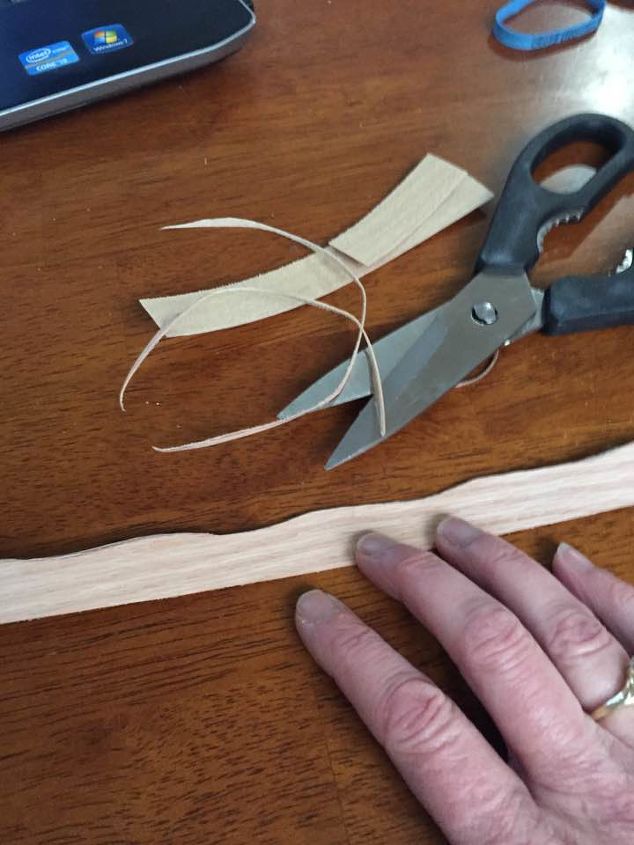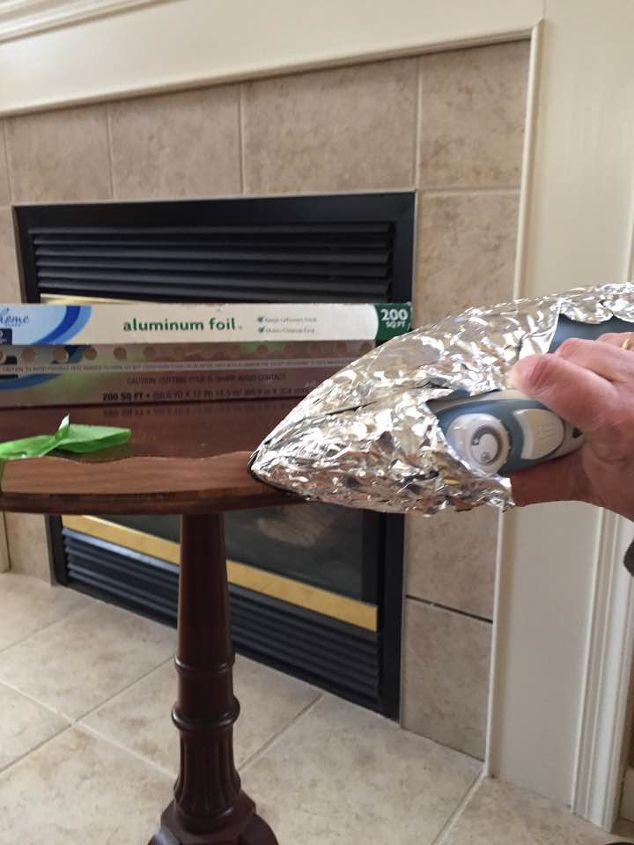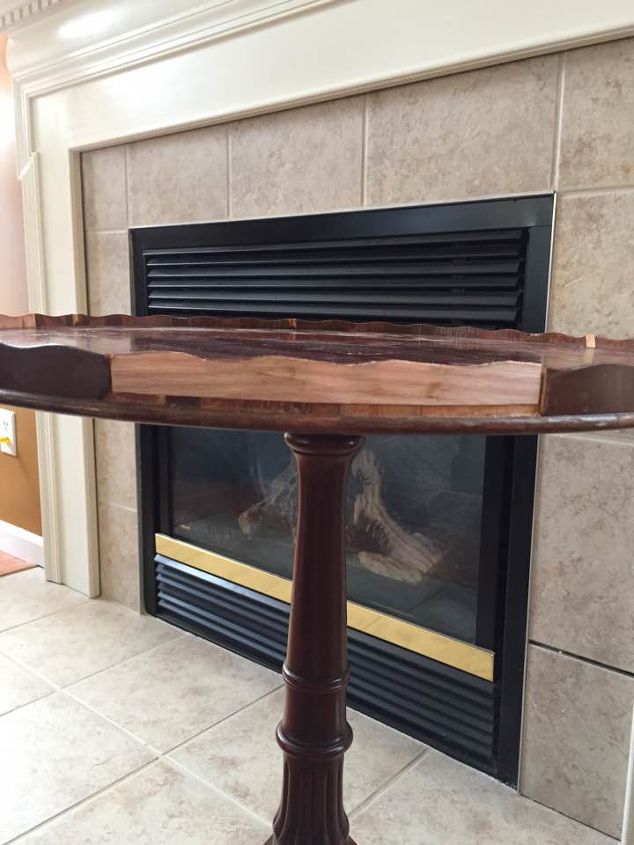 Next I re-taped my pattern, but this time “right” side out. You’ll notice in the photo that my new edging doesn’t cover the entire section all the way to the bottom. I could have used wider edging, but I didn’t have any on hand. Since I planned to paint this piece I used the product I had and later filled it in with wood filler.
Next I re-taped my pattern, but this time “right” side out. You’ll notice in the photo that my new edging doesn’t cover the entire section all the way to the bottom. I could have used wider edging, but I didn’t have any on hand. Since I planned to paint this piece I used the product I had and later filled it in with wood filler.
 I wrapped my iron in aluminum foil to protect it from getting scratched or potentially getting adhesive on it. Using the high heat setting, I gently rubbed it on to the new edging. The heat quickly activates the adhesive.
I wrapped my iron in aluminum foil to protect it from getting scratched or potentially getting adhesive on it. Using the high heat setting, I gently rubbed it on to the new edging. The heat quickly activates the adhesive.
 I allowed the re-activated adhesive to cool before removing the tape. I later filled in the gaps with stain-able wood filler. There were also some other small areas of damage that I filled in with wood filler. After the wood filler was dry I sanded it smooth.
I allowed the re-activated adhesive to cool before removing the tape. I later filled in the gaps with stain-able wood filler. There were also some other small areas of damage that I filled in with wood filler. After the wood filler was dry I sanded it smooth.

 And finally here is the finished piece! It’s almost as good as new.
And finally here is the finished piece! It’s almost as good as new.

 To finish the table I used layers of chalk paint, wet distressing, stencils, dark wax, and gold highlights. I detailed these steps on my blog post, so if you’re interested in learning how to create a similar look then I would love for you to stop by.
To finish the table I used layers of chalk paint, wet distressing, stencils, dark wax, and gold highlights. I detailed these steps on my blog post, so if you’re interested in learning how to create a similar look then I would love for you to stop by.
http://theblacksheepshoppe.blogspot.com/2017/02/vintage-pedestal-table.html
Want more details about this and other DIY projects? Check out my blog post! GO
